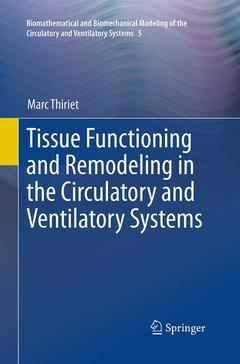Description
Tissue Functioning and Remodeling in the Circulatory and Ventilatory Systems, Softcover reprint of the original 1st ed. 2013
Biomathematical and Biomechanical Modeling of the Circulatory and Ventilatory Systems Series, Vol. 5
Author: Thiriet Marc
Language: English
Subjects for Tissue Functioning and Remodeling in the Circulatory and...:
Keywords
blood flow behavior; blood flow prediction; cardiovascular systems modeling; cell signalling pathways; ion and molecule carriers described; modeling respiratory function; modeling simulation of flows; physiological flows; receptors ligands; signaling mediators explained; ventilatory systems modeling; Systems Biology
Approximative price 210.99 €
In Print (Delivery period: 15 days).
Add to cartPublication date: 08-2016
Support: Print on demand
Approximative price 210.99 €
In Print (Delivery period: 15 days).
Add to cartPublication date: 01-2013
962 p. · 15.5x23.5 cm · Hardback
Description
/li>Contents
/li>Comment
/li>
Chapter 1: Blood
Chapter 2: Hematopoiesis
Chapter 3: Blood Cells
Chapter 4: Lymph Drainage
Chapter 5: Cardiomyocytes
Chapter 6: Heart Wall
Chapter 7: Vessel Wall
Chapter 8: Smooth Myocytes
Chapter 9: Vascular Endothelium
Chapter 10: Vascular Growth
Chapter 11: Tissue Development, Repair, and Remodeling
Chapter 12: Airway Surface Liquid and Respiratory Mucus
Chapter 13: Surfactant
Chapter 14: Conclusion
References
List of Currently Used Prefixes and Suffixes
List of Aliases
Complementary Lists of Notations
Index
Reviews structure and function of major constituents of the circulatory and respiratory apparatus
Describes major cellular processes involved in signaling, interactions, and adaptive responses of physiological conduits
Integrates biology, chemistry, and physics for the multidisciplinary exploration and modeling of physiological flows
Focuses on mechanotransduction-induced regulation
Includes supplementary material: sn.pub/extras




